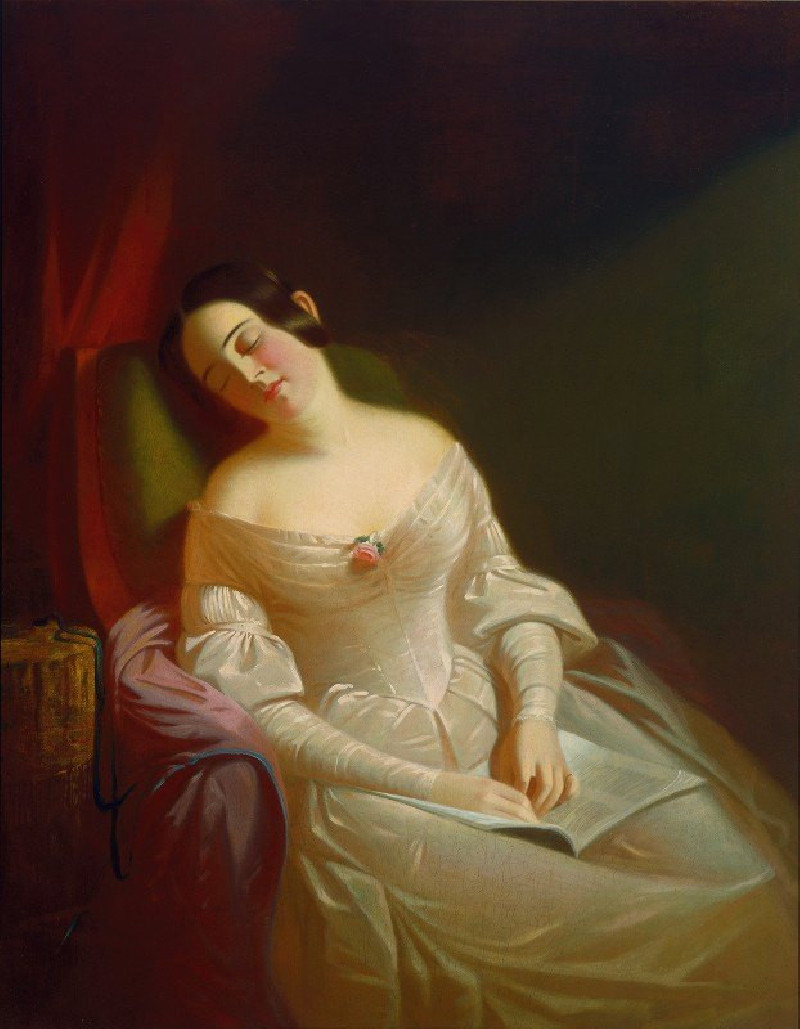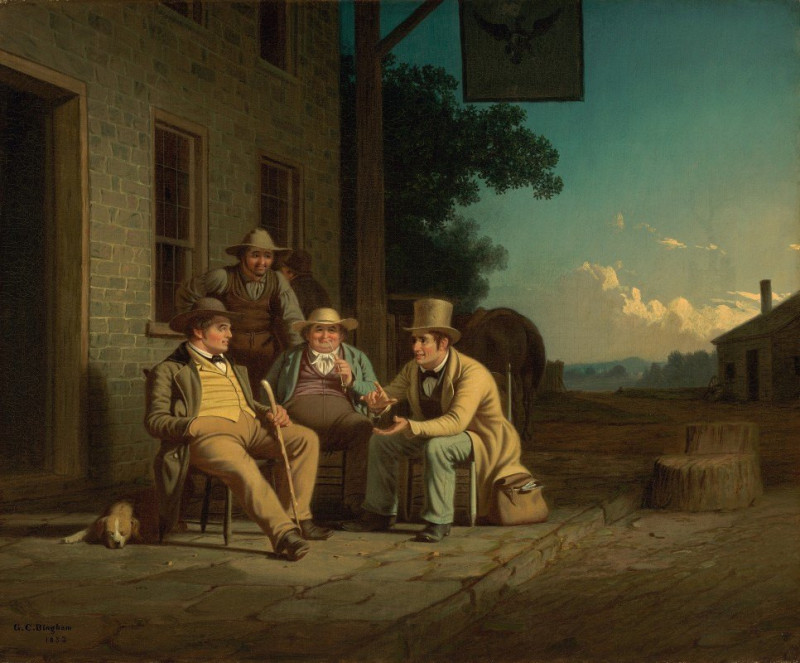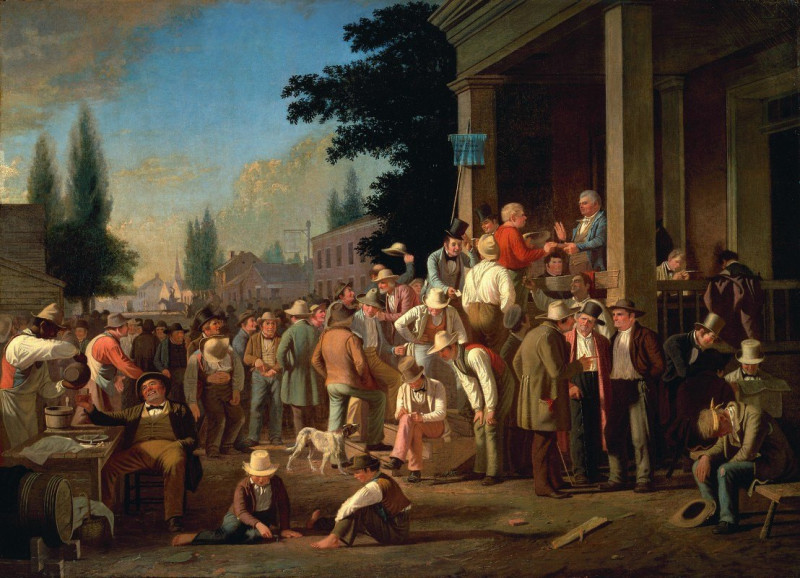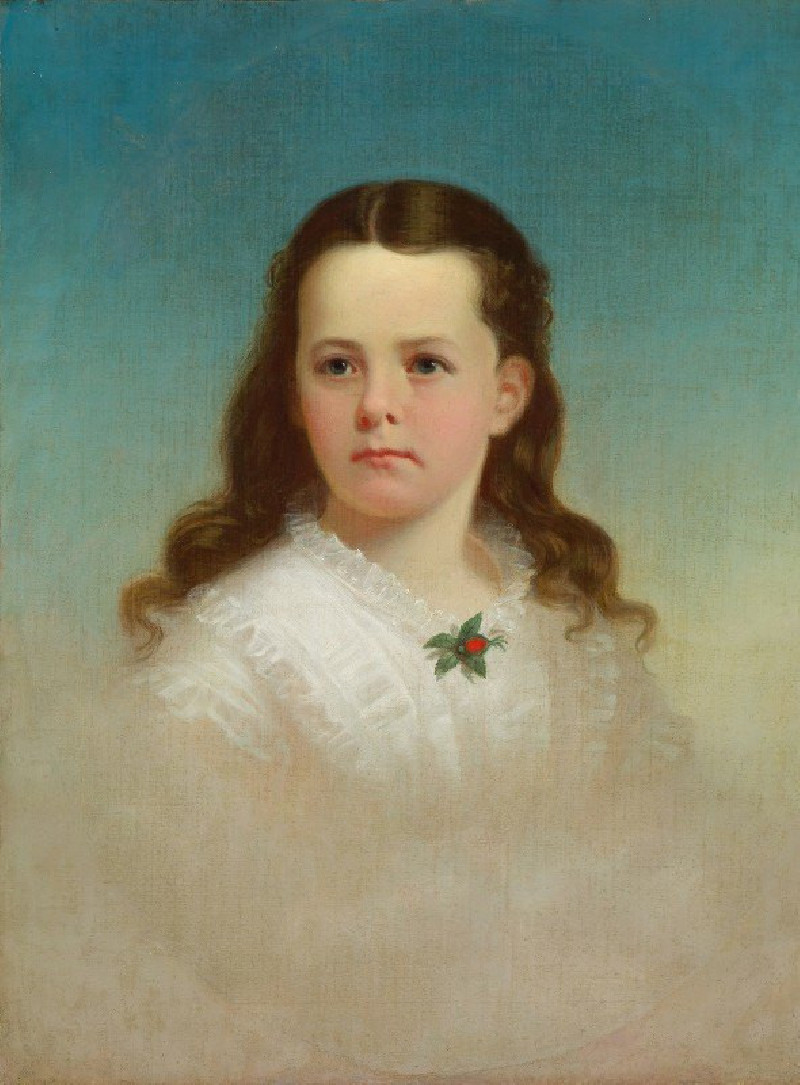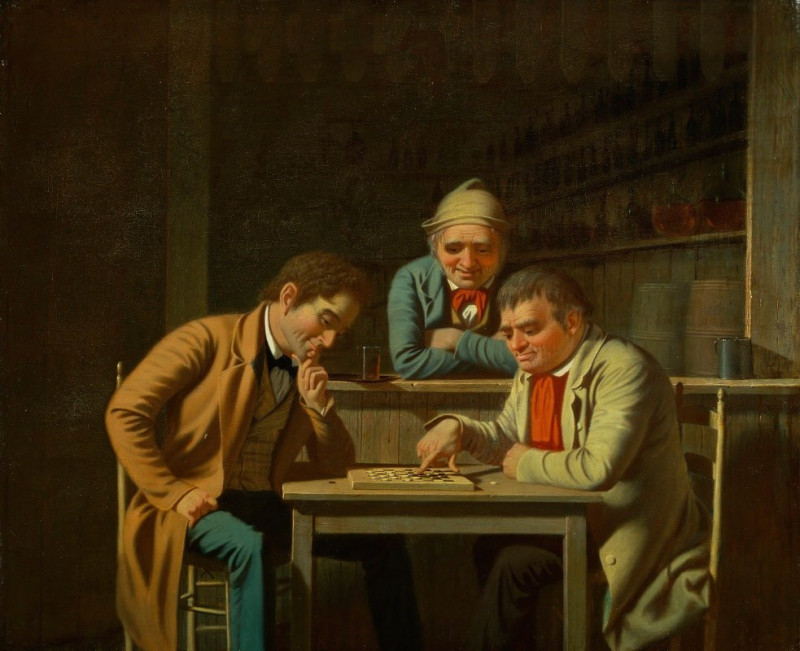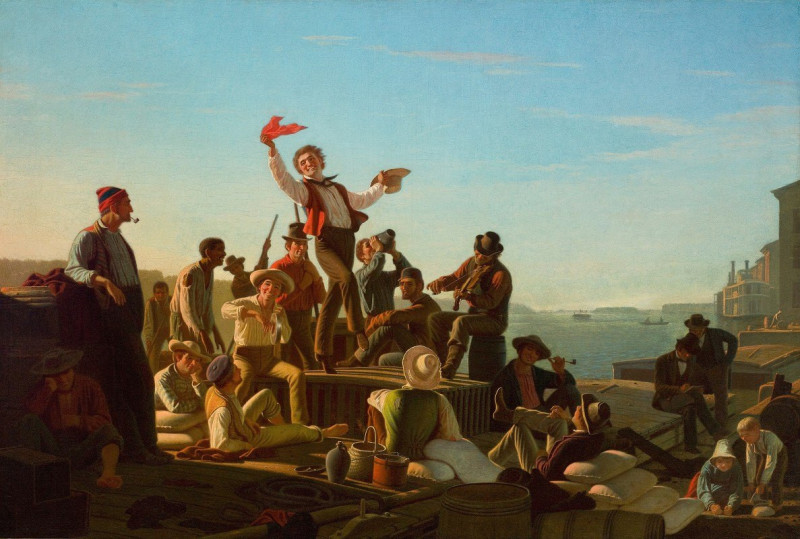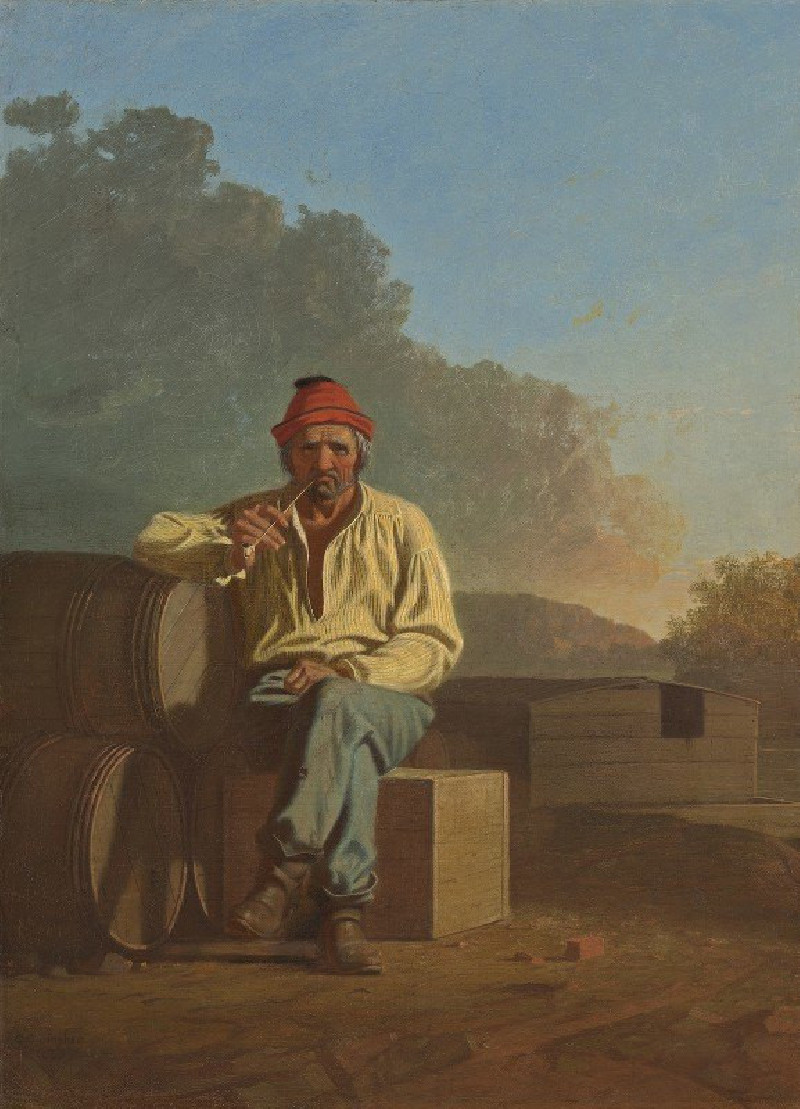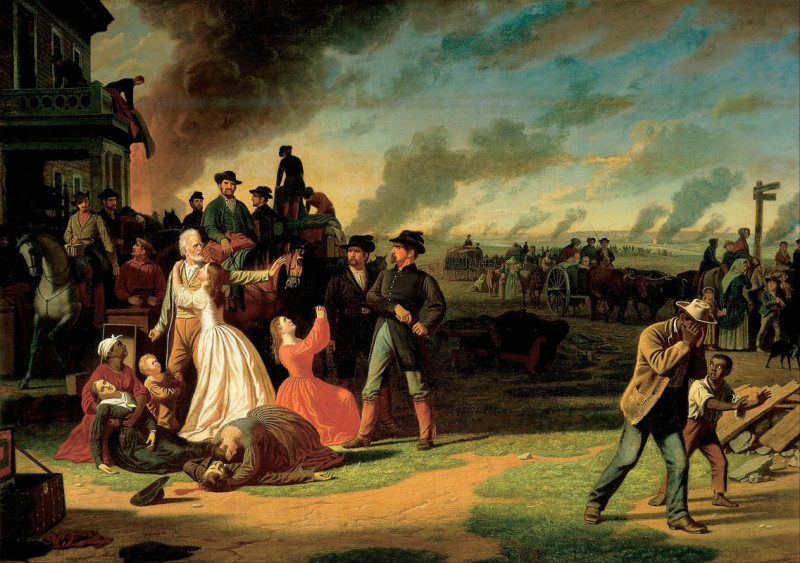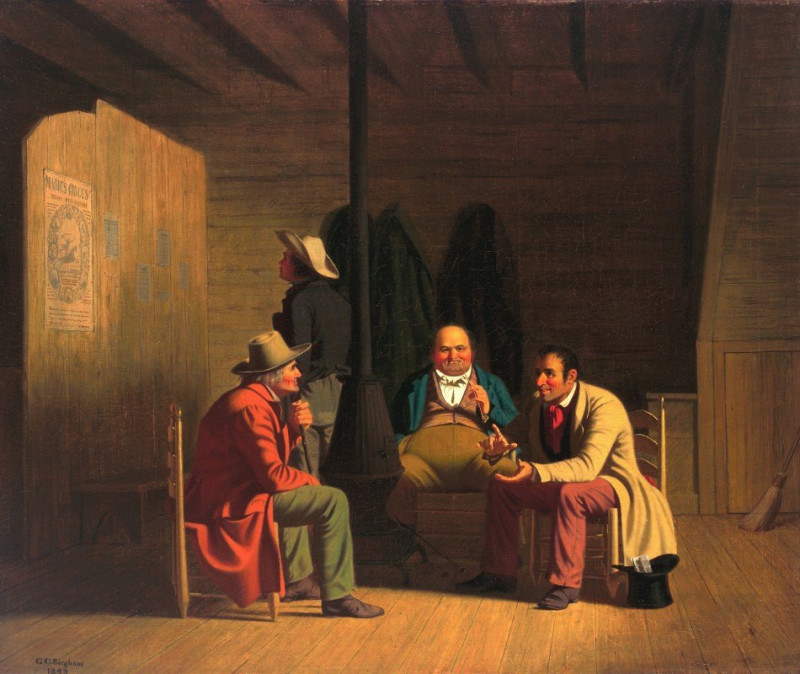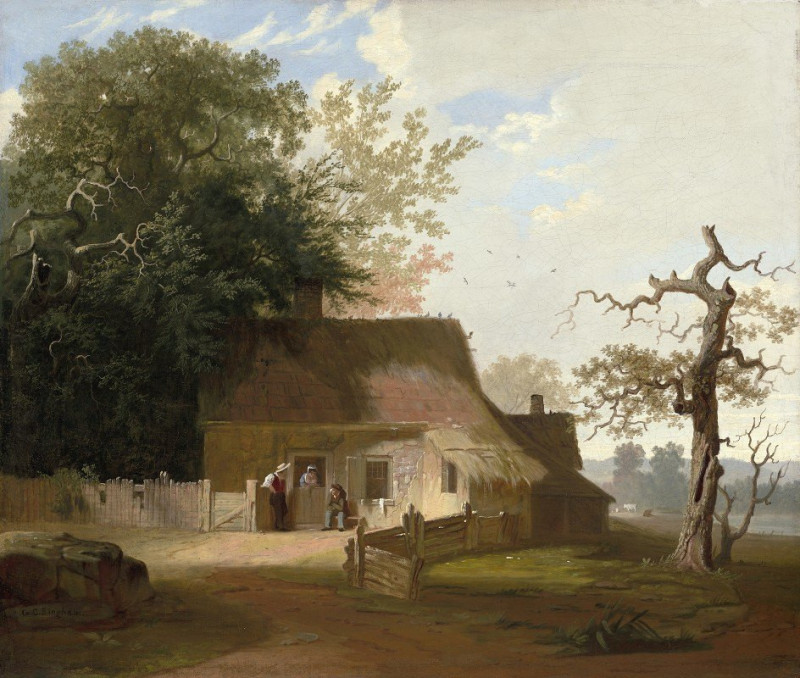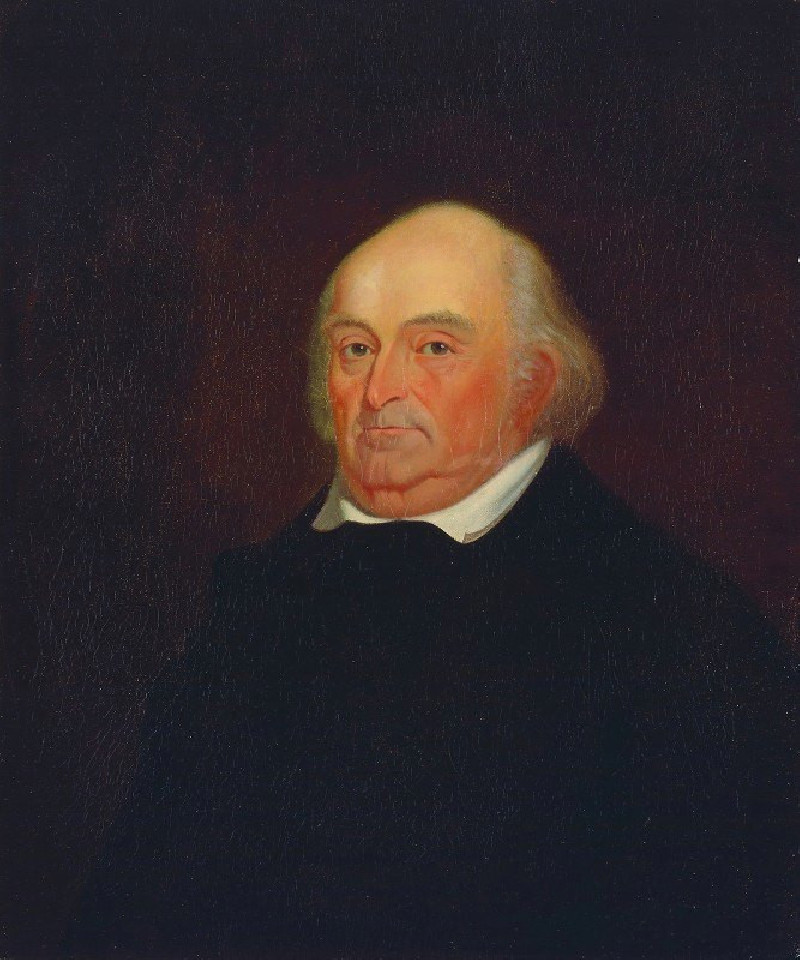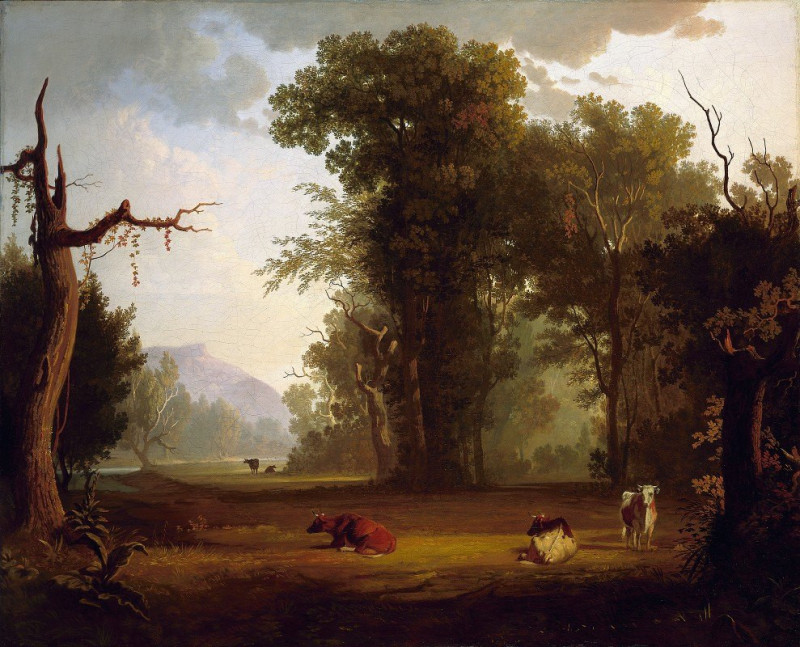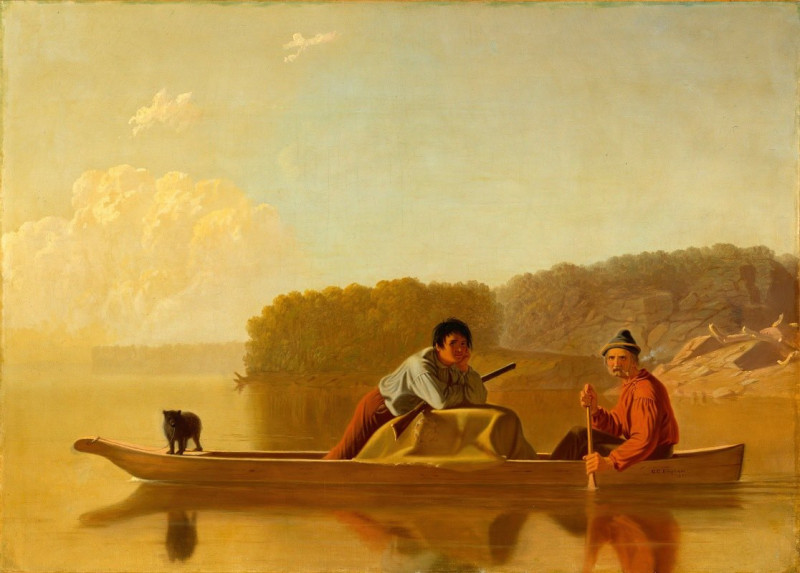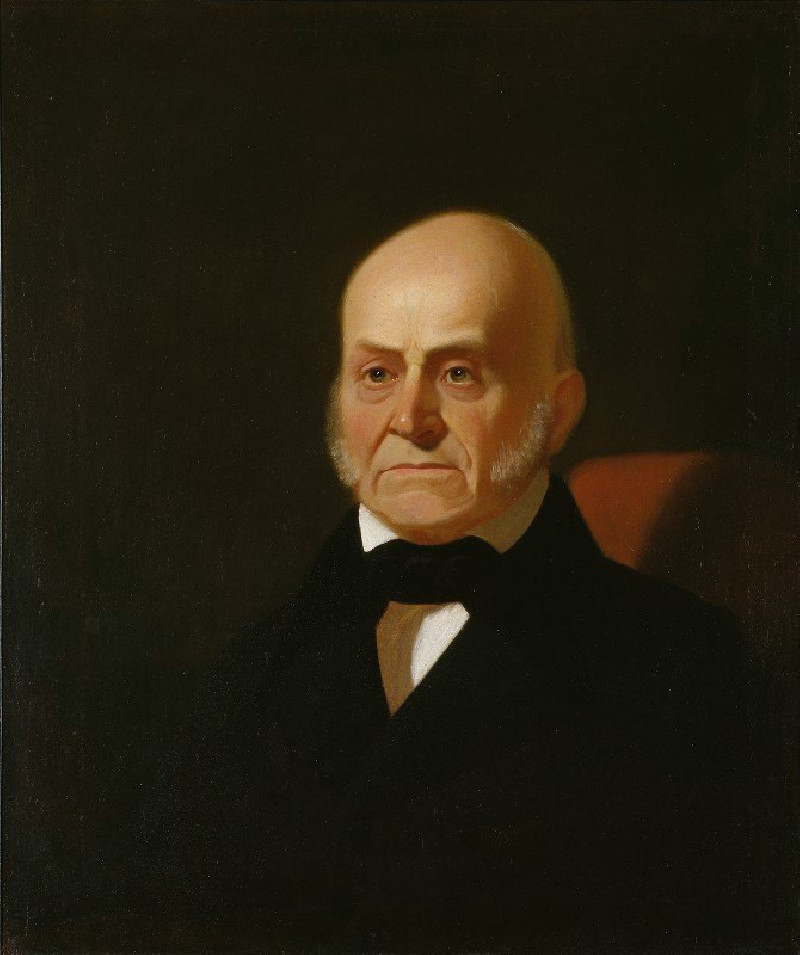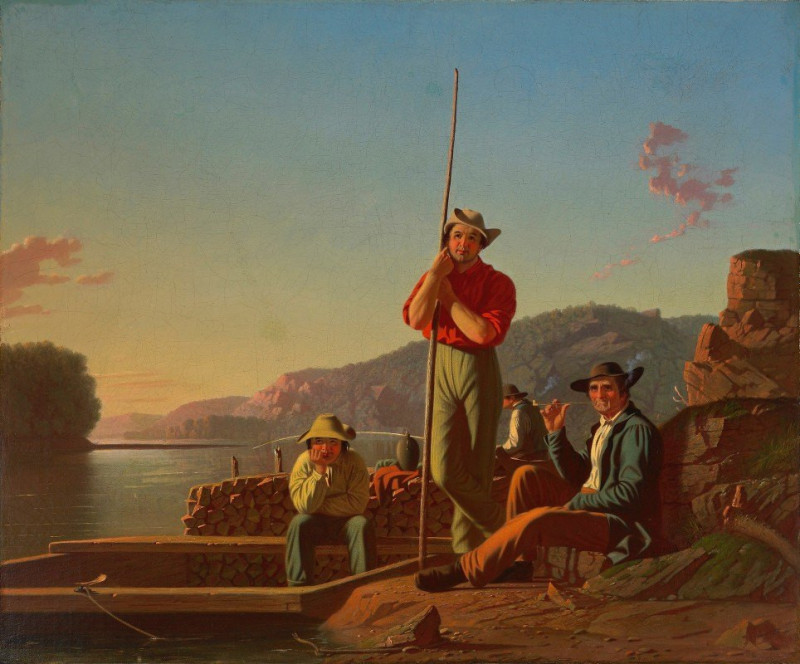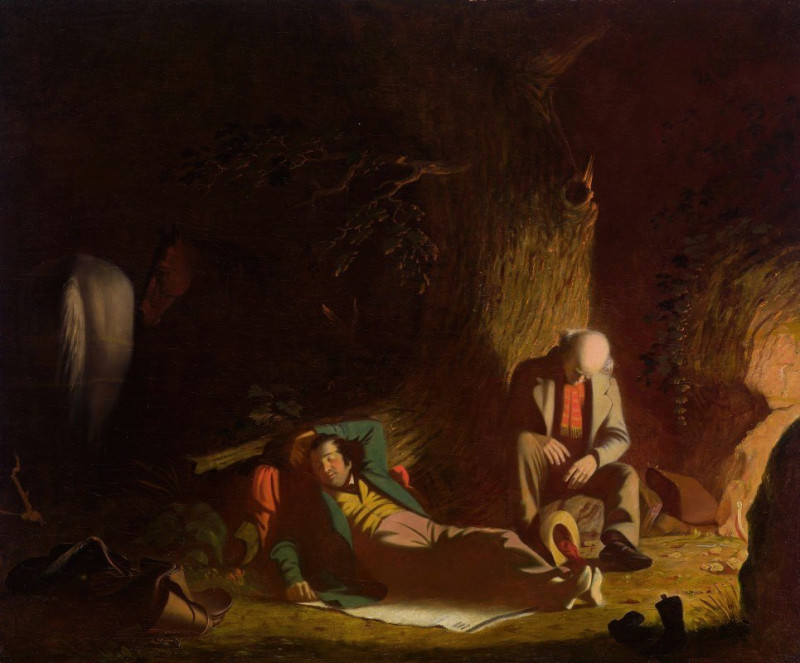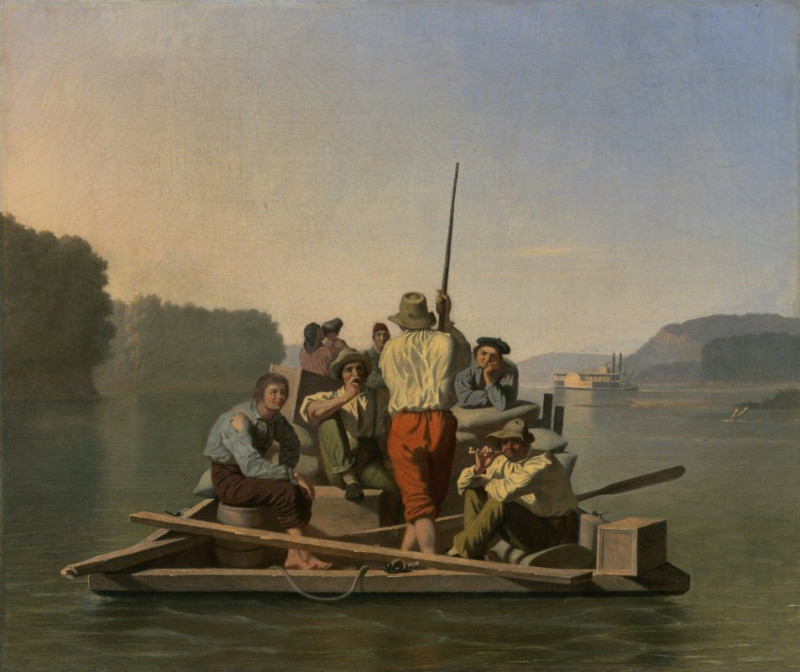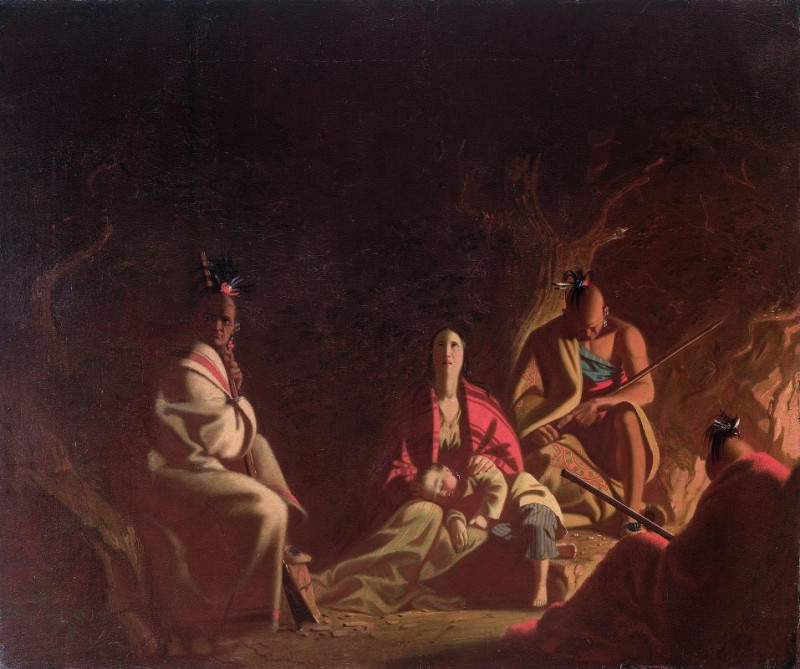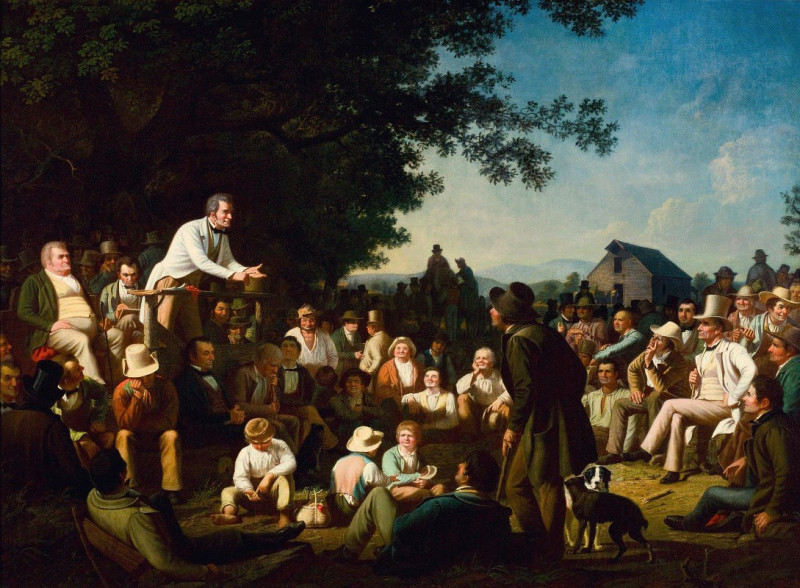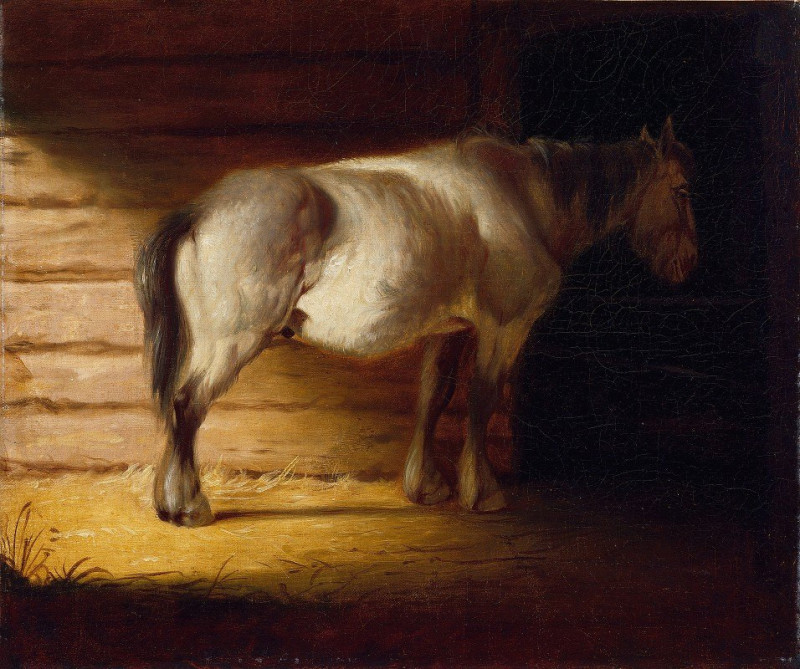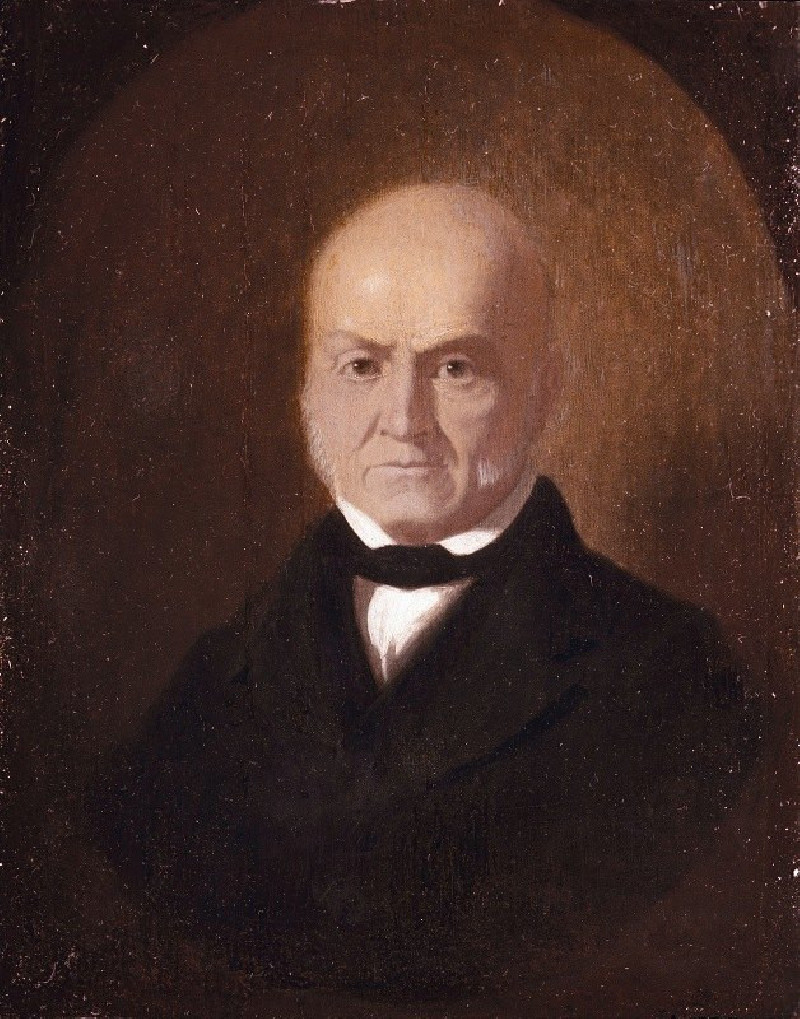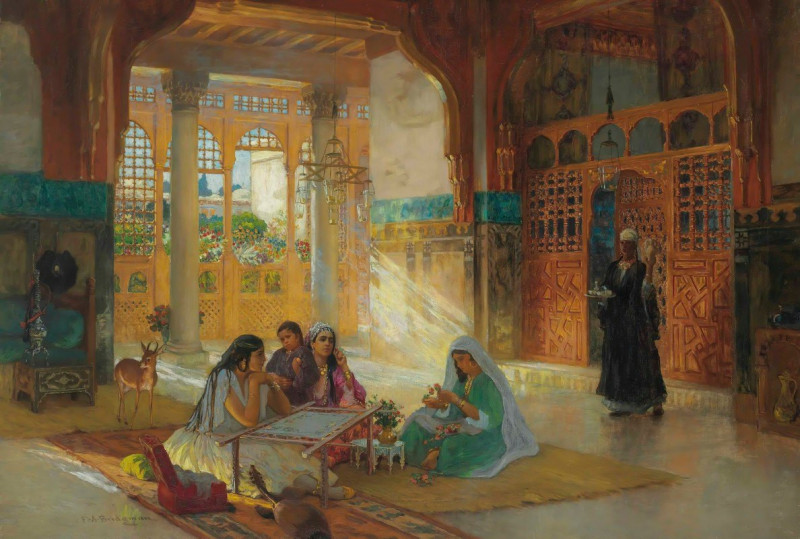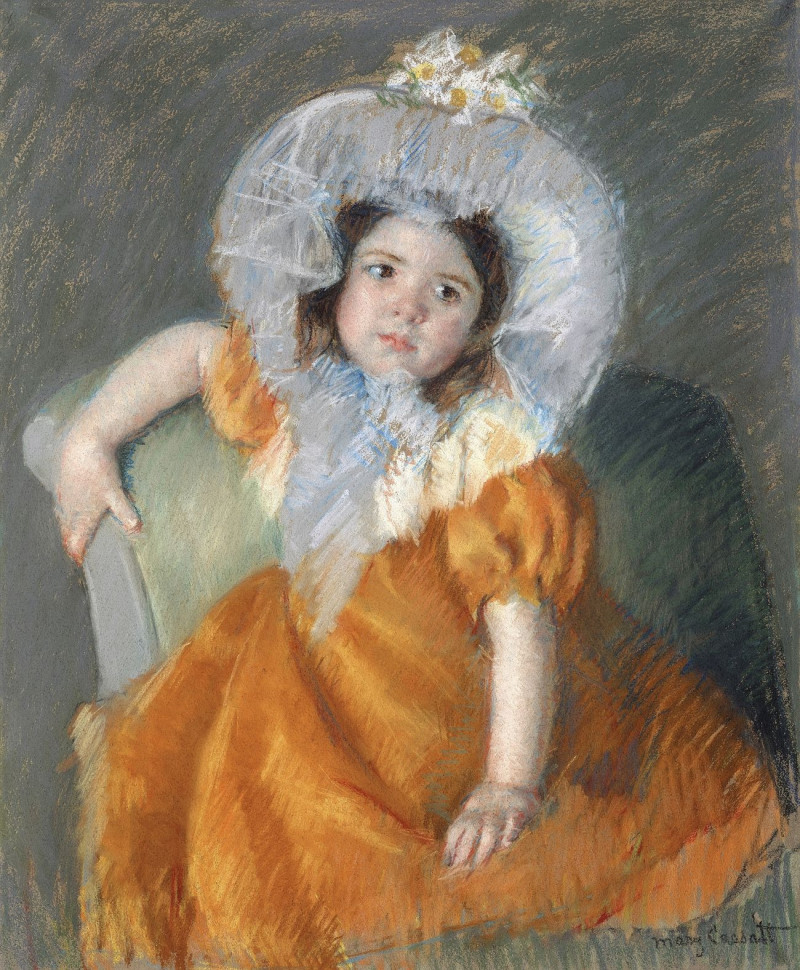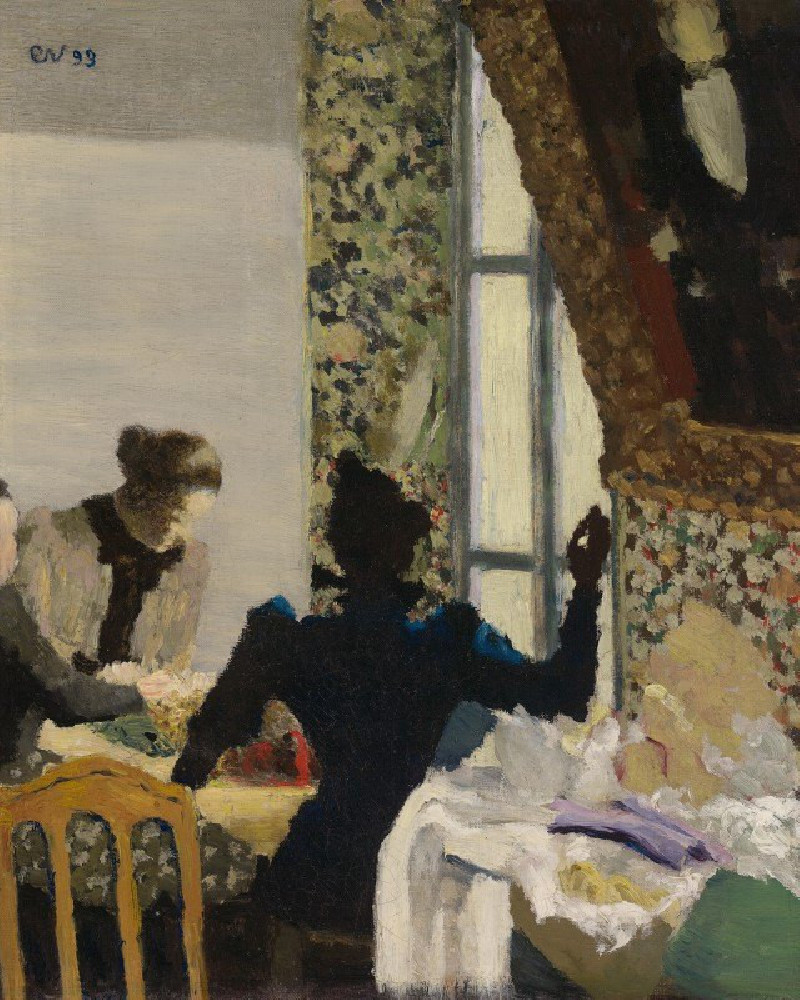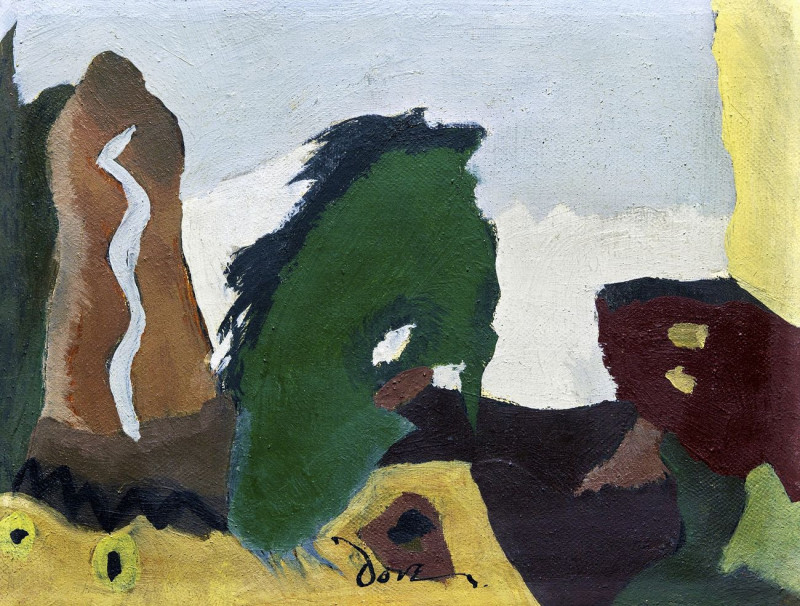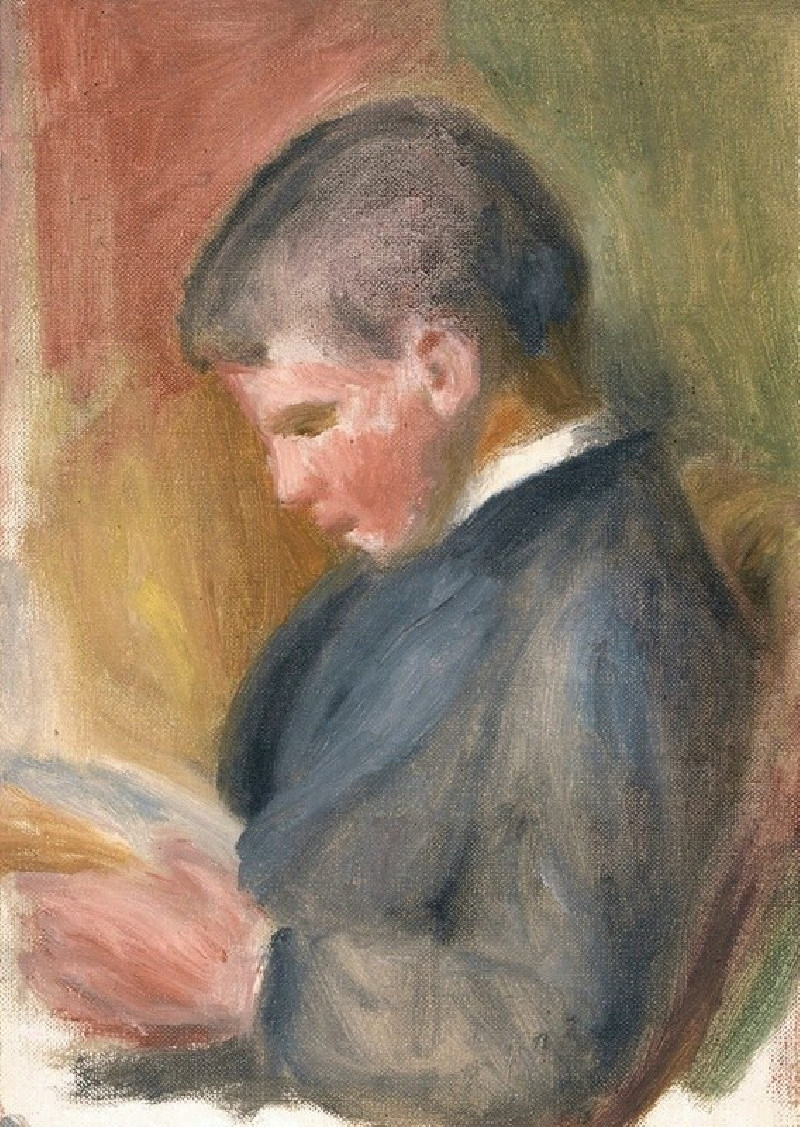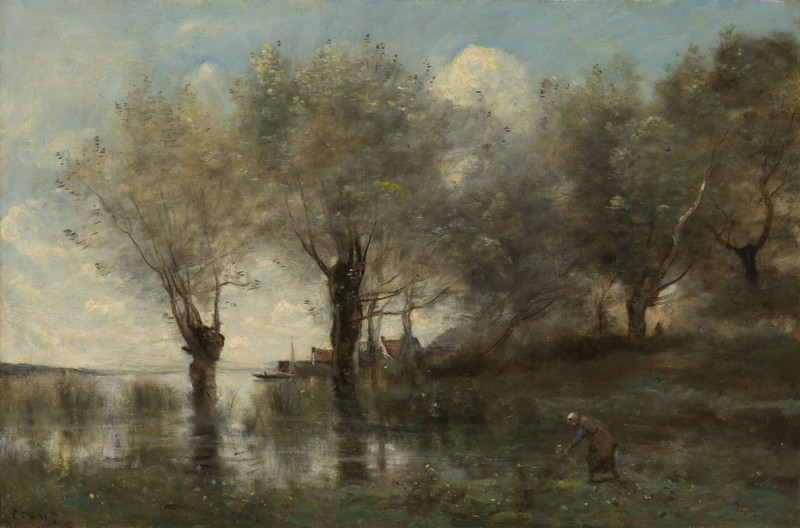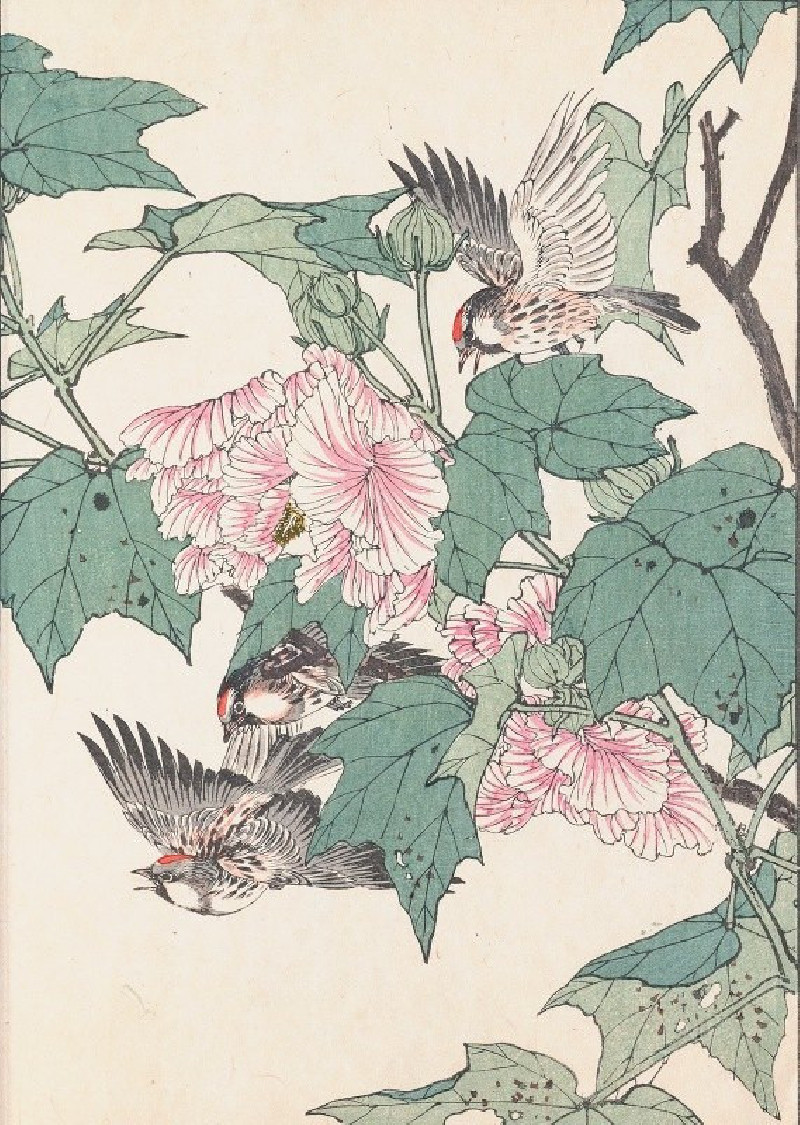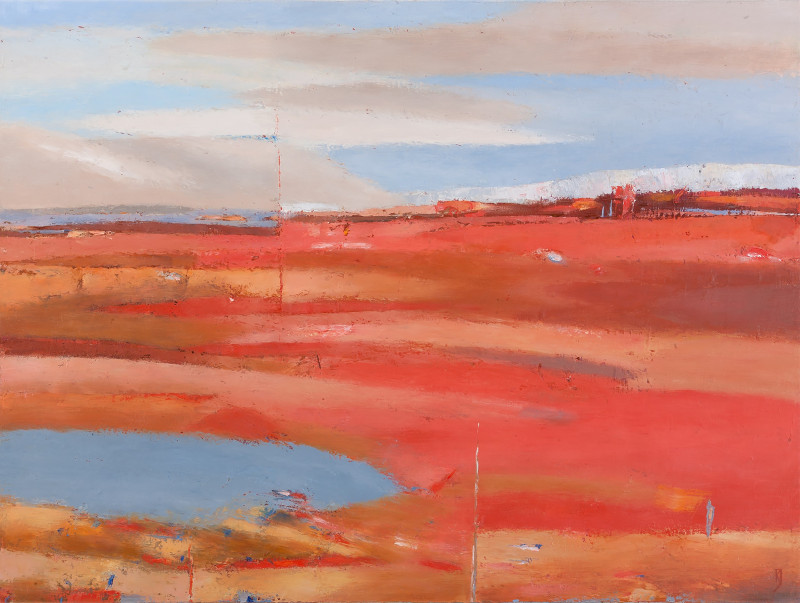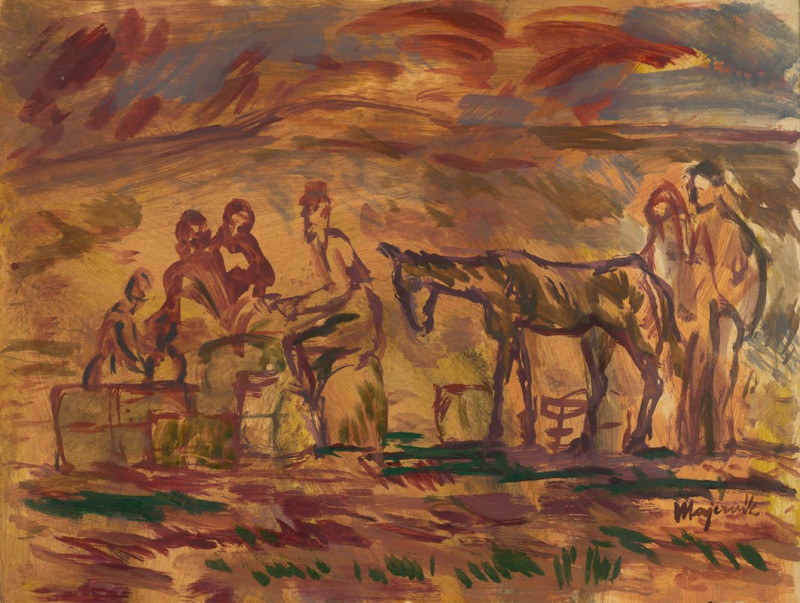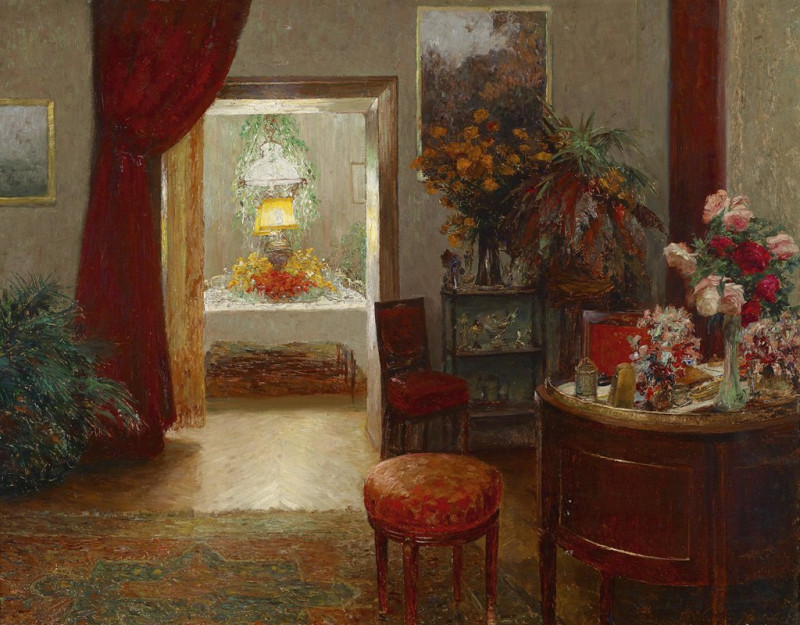The Dull Story (1843–44)
Technique: Giclée quality print
Recommended by our customers
More about this artwork
Titled "The Dull Story" and painted by the esteemed American artist George Caleb Bingham between 1843 and 1844, this enchanting oil painting captures a moment of unintended repose. The piece depicts a young woman, elegantly dressed in a flowing satin gown. Her attire, characterized by its luminous fabric and delicate rose adornment at the neckline, evokes the refined fashion of mid-19th century America.Seated comfortably in a plush armchair, the subject has succumbed to sleep, her book resting open on her lap, suggesting that the story failed to keep her engaged. The gentle tilt of her head and the serene expression on her face convey a deep, peaceful slumber. The painting's background is subdued, with dark, warm tones that contrast with the bright, soft lighting on the woman, highlighting her as the focal point.George Caleb Bingham, known for his realistic portrayals of American life, here explores a quiet, intimate scene that exudes a sense of tranquility and the personal moment of escape into the world of literature, even if the tale itself does not captivate.
Delivery
Returns
George Caleb Bingham (March 20, 1811 – July 7, 1879) was an American artist, soldier and politician known in his lifetime as "the Missouri Artist". Initially a Whig, he was elected as a delegate to the Missouri legislature before the American Civil War where he fought against the extension of slavery westward.

